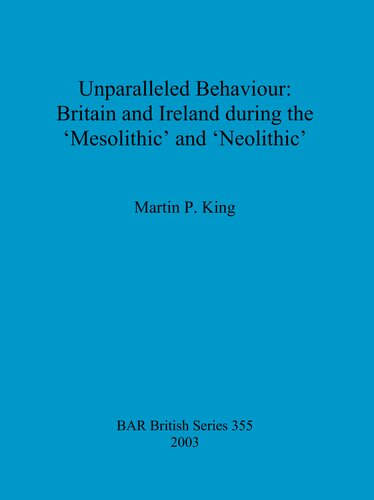

Most ebook files are in PDF format, so you can easily read them using various software such as Foxit Reader or directly on the Google Chrome browser.
Some ebook files are released by publishers in other formats such as .awz, .mobi, .epub, .fb2, etc. You may need to install specific software to read these formats on mobile/PC, such as Calibre.
Please read the tutorial at this link: https://ebookbell.com/faq
We offer FREE conversion to the popular formats you request; however, this may take some time. Therefore, right after payment, please email us, and we will try to provide the service as quickly as possible.
For some exceptional file formats or broken links (if any), please refrain from opening any disputes. Instead, email us first, and we will try to assist within a maximum of 6 hours.
EbookBell Team

5.0
88 reviewsThis extensive book is organised into three parts. Part one discusses the changing perspectives of the 'Mesolithic' and 'Neolithic', in particular the changing way that the two periods have been viewed in relation to economy and subsistence. Continuity in economic and subsistence patterns between the 'Mesolithic' and 'Neolithic' of Britain and Ireland are examined in detail. Part two begins with a theoretical chapter which outlines and overviews the past and current use standard social theory. The following chapters look at the evidence for human social behaviour relating to occupation, mobility, clearing woodland, construction, the deposition of artefacts and the distribution and treatment of human and animal skeletal material. The large corpus of literature illustrates the continuity that is present in the empirical evidence between the 'Mesolithic' and 'Neolithic'. Part three, which contains a case study chapter and the conclusion, applies the arguments and observations made in Parts one and two to a case study of the Avebury region. The case study documents the archaeological and environmental data gathered over the last few centuries which identifies continuity in human social behaviour across the 'Mesolithic'/'Neolithic' divide, from the early tenth to the late fifth millennium BP. The case study concludes that a complex and intermeshed patterning of human activity occurred across the landscape from the early tenth to the late fifth millennium BP and that the 'Mesolithic' and 'Neolithic' represent one tradition of 'action', whatever specific verbalised meanings may have been involved. Finally, the book concludes that the current discourse's interpretive approaches adversely affect our ability to identify past human social behaviour which has no direct parallel in either the observed and/or the documented social life of the present or the recent past.